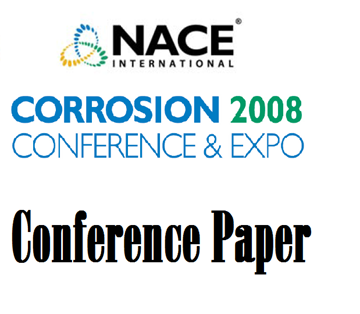Search
10299 Environmental Cracking of X-60 Pipeline Steel
Also Purchased
10300 Effect of CO2 on Near-Neutral Ph Stress Corrosion Cracking Initiation of Pipeline Steel
Product Number:
51300-10300-SG
ISBN:
10300 2010 CP
Publication Date:
2010
$20.00
10288 Environment Induced Cracking of Advanced Steam Turbine Blade Steels
Product Number:
51300-10288-SG
ISBN:
10288 2010 CP
Publication Date:
2010
$20.00
08265 Modeling of Carbonate-Bicarbonate Stress Corrosion Cracking of Pipeline Steels
Product Number:
51300-08265-SG
ISBN:
08265 2008 CP
Publication Date:
2008
$20.00
Recently viewed




